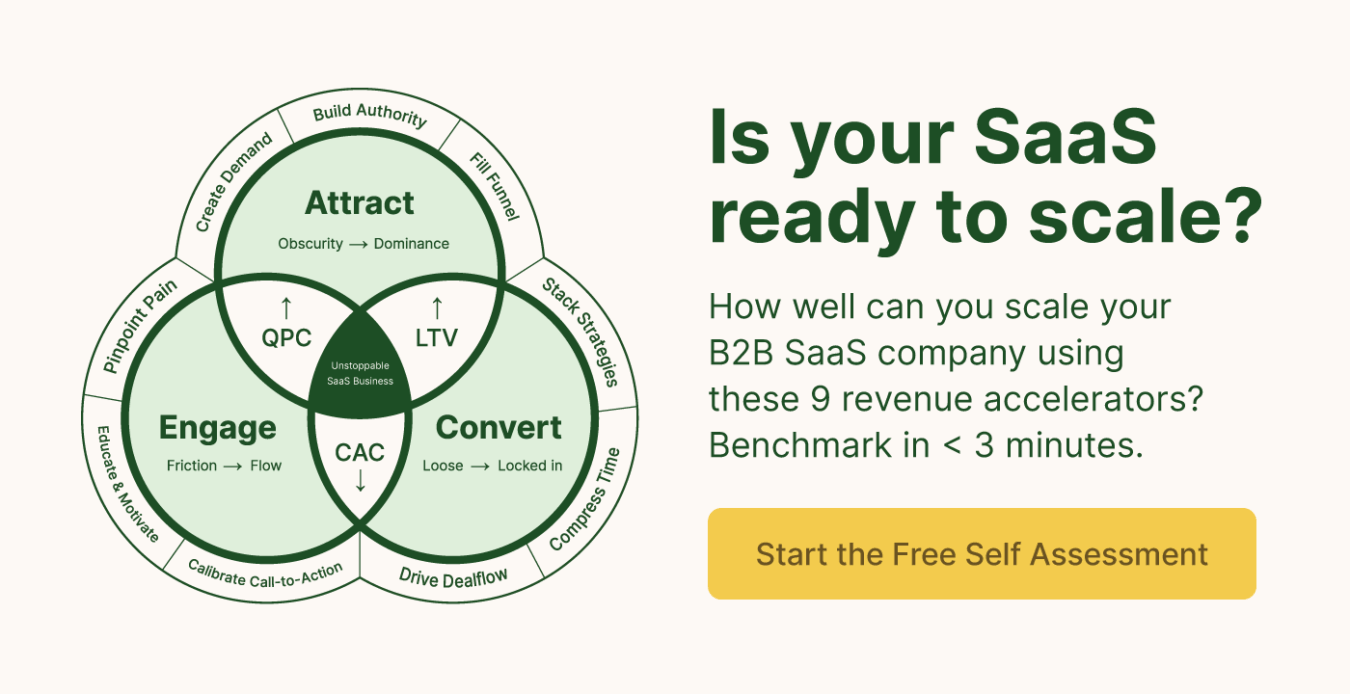Future-Proofing SEO in the Age of AI For B2B SaaS
Last updated: August 1st, 2025
“Is SEO still worth the investment?”
Clicks from Google search are declining, and more people are using LLMs like ChatGPT for search.
You’ve also probably heard that some people use social media for product research.
These statistics make many SaaS marketers question the future of B2B SaaS SEO.
And even if SEO is still relevant, you may have noticed that traditional SEO strategies no longer work.
In this post, we’ll share our outlook on the future of SEO and how we’re addressing changes for our B2B SaaS clients.
The Future of SEO (As Illustrated By New Data)
Marketer Rand Fishkin recently published original data regarding Google’s market share, and Google searches have grown significantly since 2023 despite the rise of AI tools and social media.
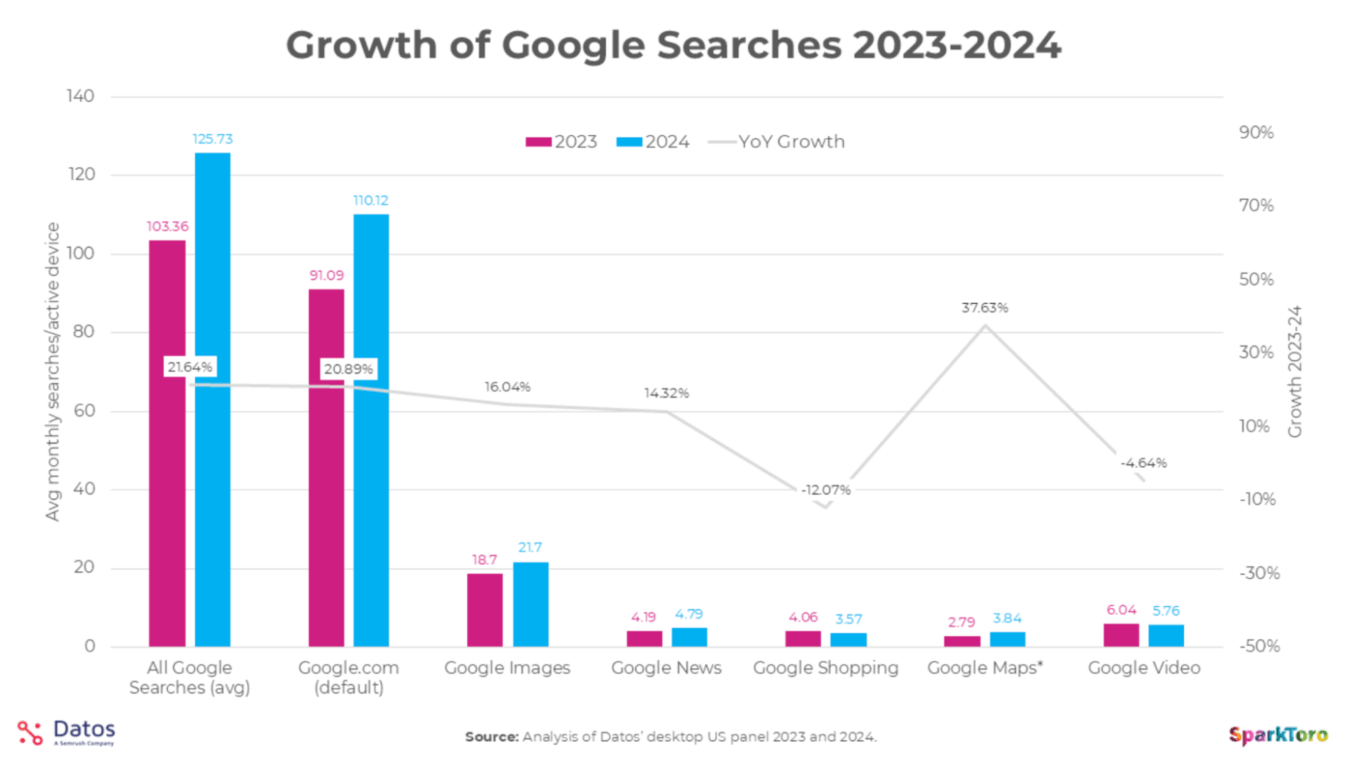
Google still owns the overwhelming majority (93.57%) of search. On the other hand, ChatGPT (which currently has the largest market share of LLM searches) only accounts for about 0.25% of total searches.
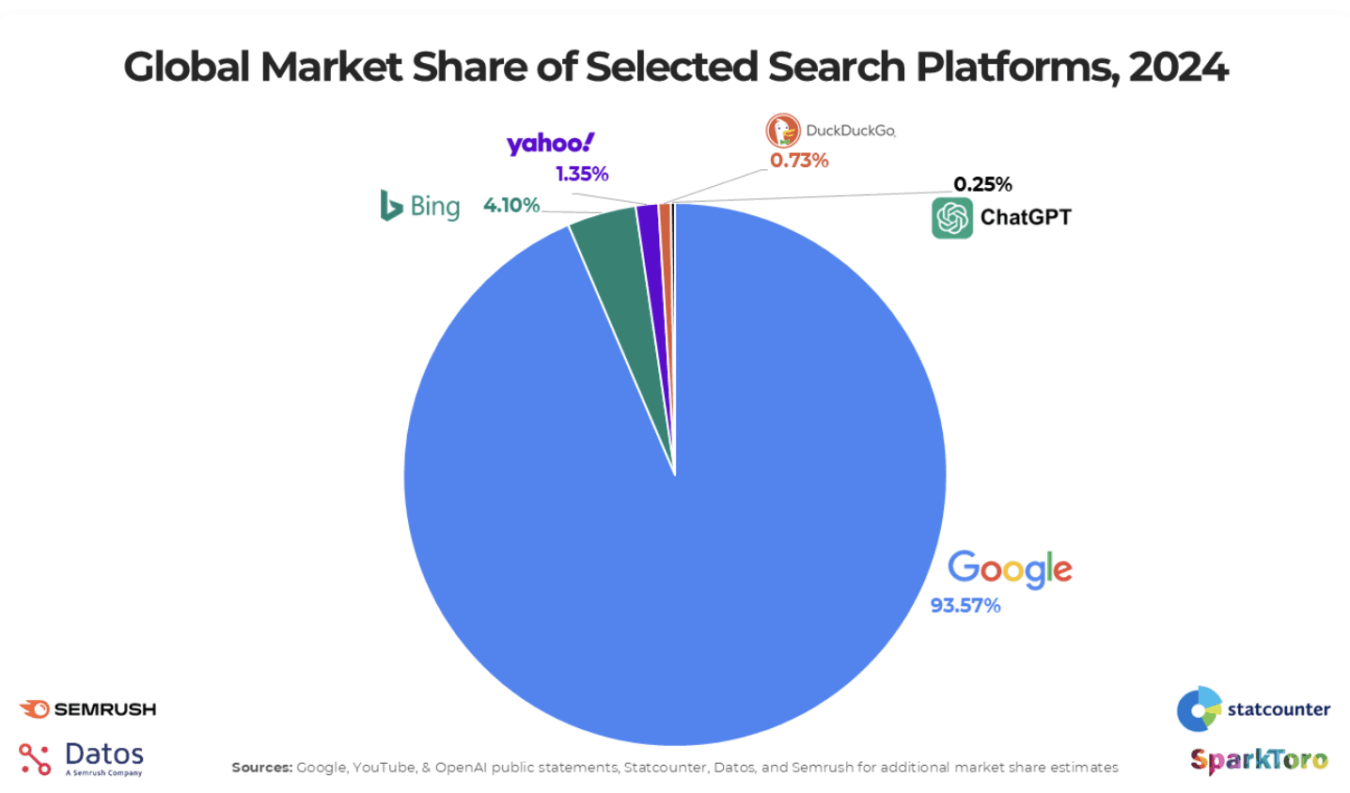
This data shows that AI platforms will continue to grow in popularity, though Google will be the dominant player in the coming years.
However, this graph only accounts for searches.
It does not account for clicks.
This is an important distinction because recent data from Seer Interactive showed that organic CTR drops by about 70% when an AI overview is present in the search result.

This data raises the initial question again, but with a modification:
“If people aren’t clicking on my website in the search results, is SEO worth it?”
To answer this question, consider another:
“Is it valuable for your brand to appear as the recommended brand in the AI overview?”
For example, if you’re an influencer marketing platform, appearing in this AI overview is quite valuable:
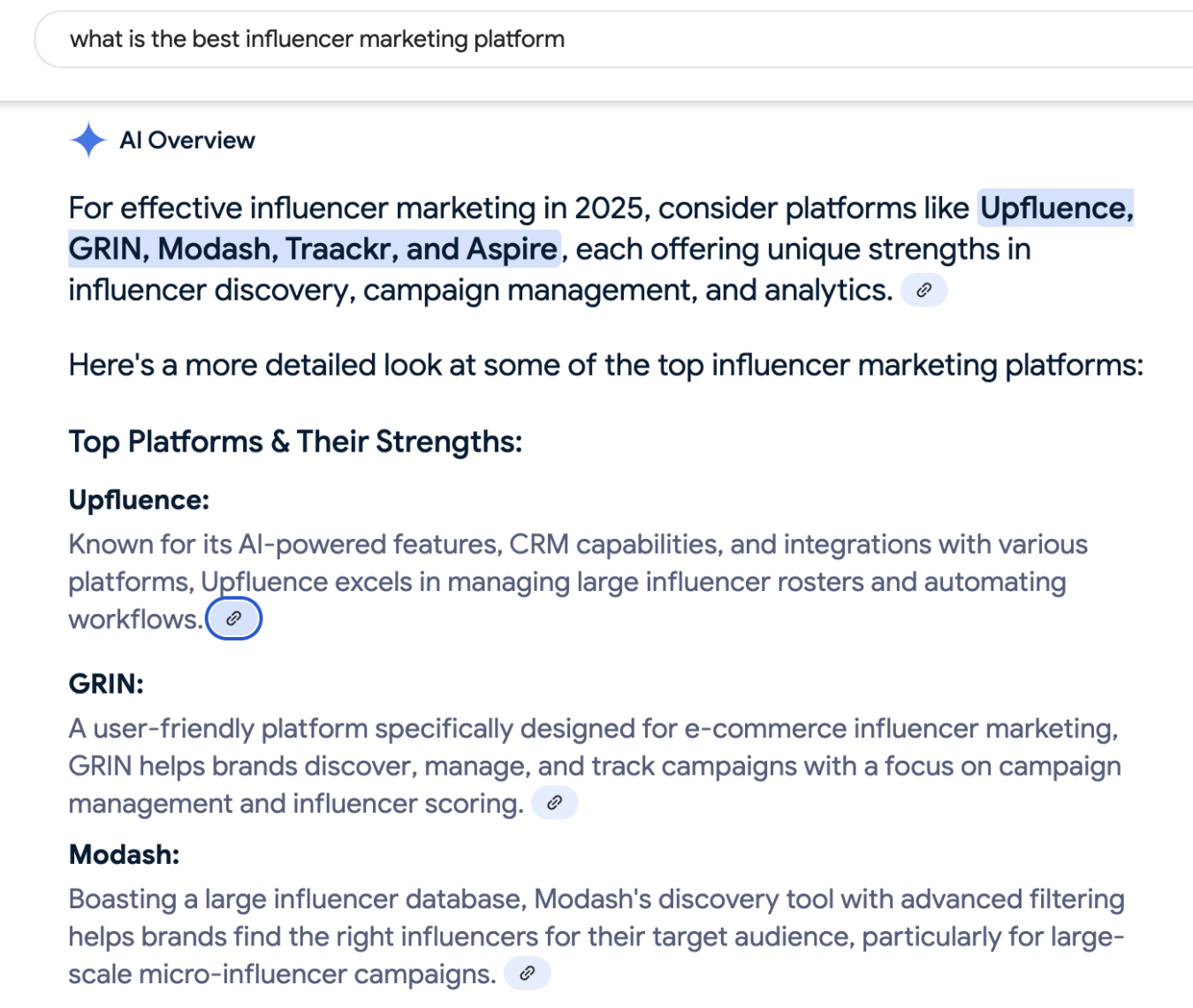
In fact, appearing here in the AI overview is arguably even more impactful than earning clicks to your website because users will likely trust recommendations from an unbiased, third-party source (Google) over a brand’s own promotional content.
To help you prepare for the future of SEO, we’ll discuss specific strategies to ensure your website not only shows up in the traditional search results, but also dominates the AI overviews and receives visibility in LLMs.
How SaaS Companies Must Adapt For The Future of SEO
The traditional SaaS SEO strategy focused on targeting individual keywords.
Find a relevant keyword, write a quality article targeting it, and then build links to the published article.
The basis of this strategy is still relevant, but targeting keywords alone is no longer enough.
Today, there’s much more content due to the rise of AI writing tools and the general awareness and acceptance of content marketing as an effective SaaS marketing strategy.
Instead of trying to determine the quality of each piece of content, search engines prioritize ranking content from websites with strong entities.
An entity is a website that is frequently linked to, receives many mentions from other industry experts, and has content covering all of the topics related to that industry in various formats.
It makes sense – bigger brands, which are often trustworthy and provide more credible information, are usually discussed more frequently online.
This concept of building a strong entity is important not only for ranking in the traditional search results but also for the AI overview and even LLMs.
The dated approach to SEO is “targeting one keyword.”
The modern approach to SEO is building an entity that’s respected and discussed throughout the industry. Your brand becomes the ultimate authority in that niche or industry.
Another benefit of building a strong entity is that the ROI compounds by leading to new partnerships and relationships.
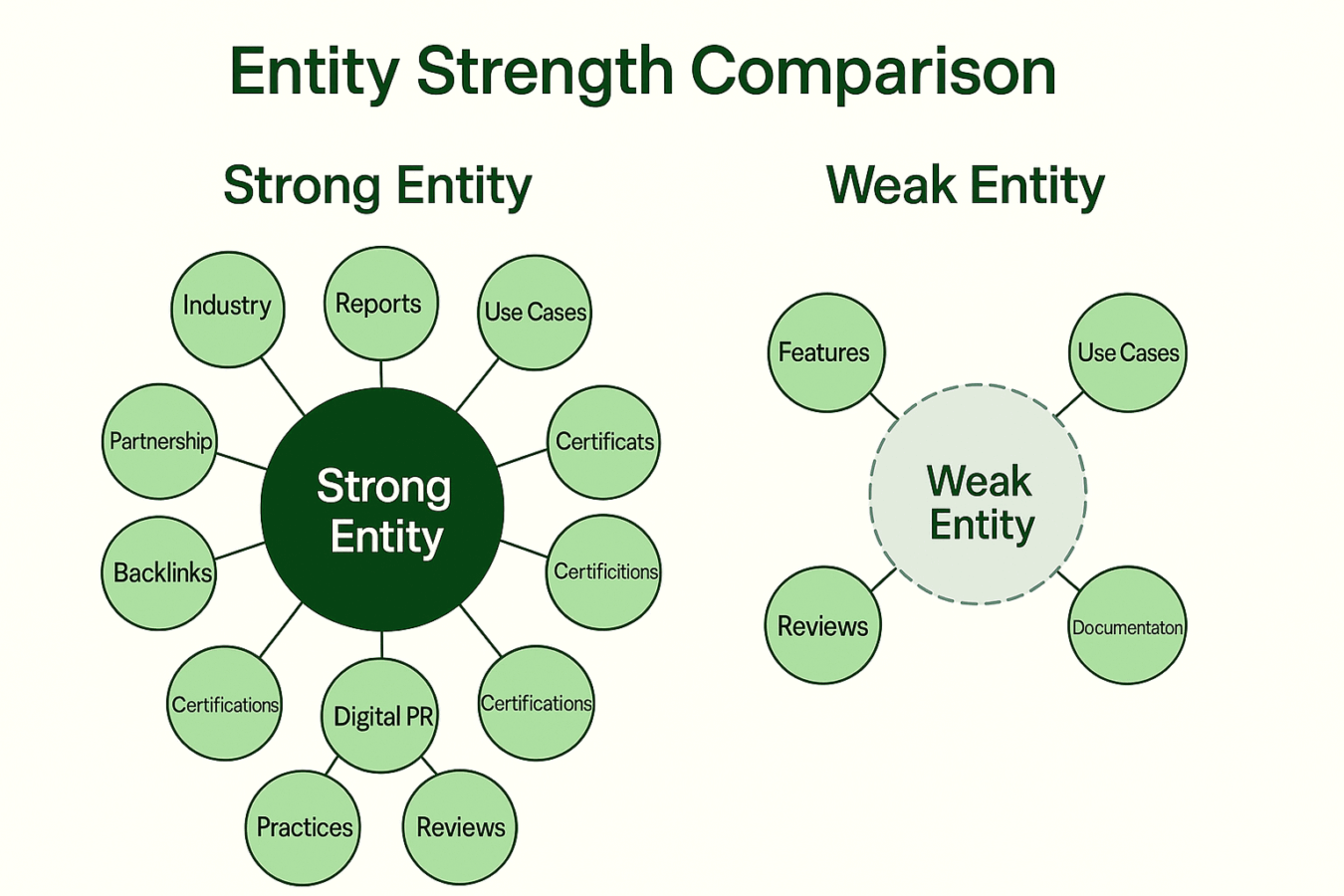
When search engines see a strong entity, they’re more confident recommending that brand to its users, resulting in greater visibility in the AI overviews and traditional search results:
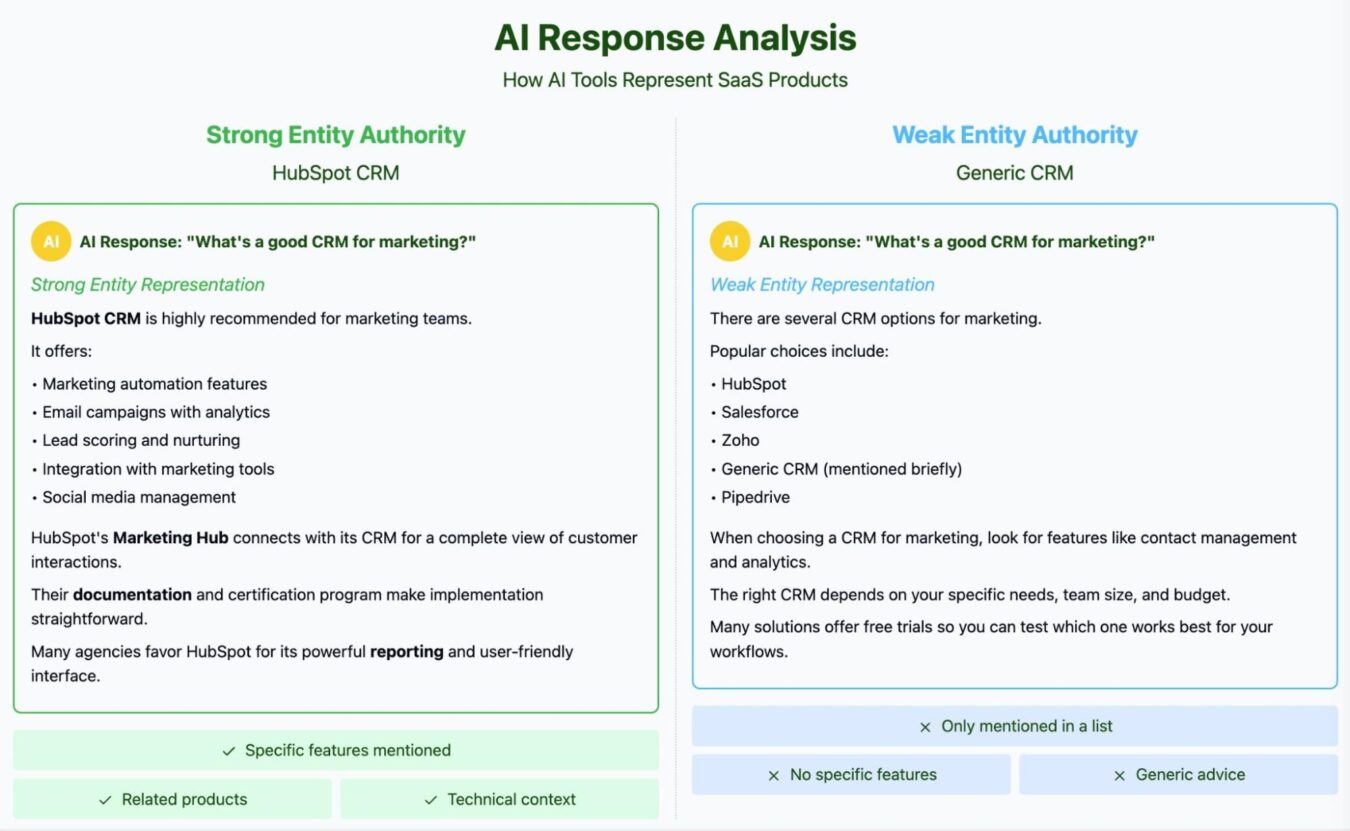
“Products with strong entity authority appear more frequently and accurately in AI responses,
while others might be misrepresented or overlooked entirely.”
Below, we’ll lay out a tactical strategy to help you build a strong entity that’s competitive in the evolving SEO landscape.
How To Build Entity Strength
There are three components to building entity strength:
- Core (Website)
- Secondary (Multimedia)
- External (Third party recognition)
We’ll discuss these components in detail and provide actionable execution steps.
1. Core (Website)
The basics of SEO – having a technically sound website with relevant content – are still important.
In fact, they’re more important than ever before.
Search engines want to deliver an excellent experience to users, so any technical issues that negatively impact the user experience will be more detrimental than ever.
We have a separate resource on our approach to technical optimization, but some basics include:
- Fast load speed
- Safe and secure
- Correct usage of structured data
- Proper indexing
- Accurate URL structures
Website architecture is also critical so crawlers can easily find your content. If crawlers can’t navigate your website, they won’t reach your content. Comprehensive content is a critical component of building a strong entity.
Clear website architecture is also essential for users to find your content easily. If users can’t find your content, they won’t complete the buyer journey and, therefore, won’t convert.
We have a separate resource on our authority architecture framework, but essentially, we create a structure that’s easy to navigate and accommodates the buyer journey of each avatar.
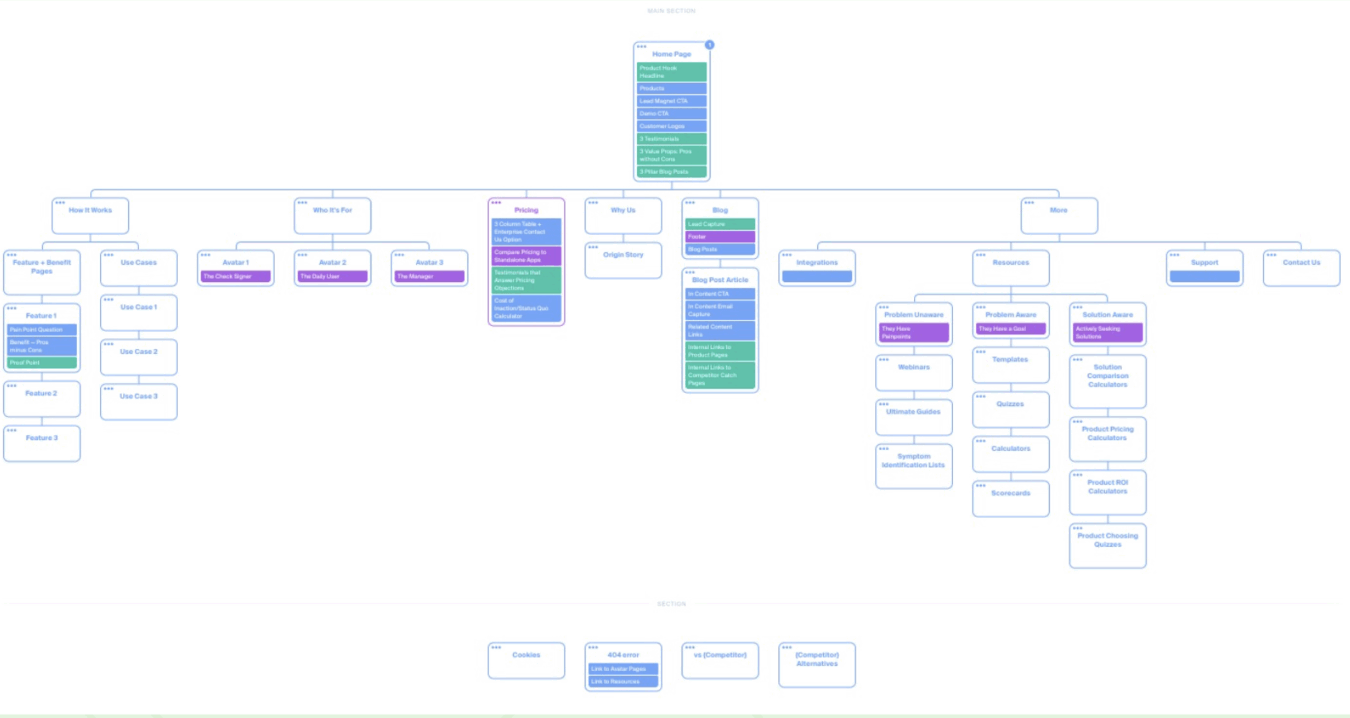
As mentioned earlier, search engines want to show brands that are industry experts, and comprehensive content is a critical component of demonstrating industry expertise.
Instead of simply creating high-quality content targeting a specific keyword, we use the hub and spoke model to create content clusters that comprehensively cover broad industry topics.
For example, if a relevant topic is “construction project management,” we’ll create a hub of information related to that topic. Linking to the main hub will be various “spoke” blog posts covering subtopics related to “construction project management,” like “construction project management tips” and “construction project management teams.”

By comprehensively covering popular topics in your industry, search engines will recognize your brand as an authority on that entire topic, and your website will receive more visibility for all related keywords.
Of course, the content must also be high quality, and standards have changed in recent years.
Instead of judging content by comprehensivity, search engines want to also ensure that it’s coming from qualified experts with genuine experience.
This is why a core component of our content creation approach is interviewing internal team members and even third party industry experts to create each piece of content. This not only reassures readers that they’re consuming credible information, but it also boosts trust with search engines and allows us to meet EEAT requirements.
2. Secondary (Multimedia)
Traditional SEO strategies focused primarily on blog content.
However, a legitimate brand has much more content than just blog posts. They have case studies, white papers, video content, active social media channels, and free tools.
Consider HubSpot.
HubSpot is currently dominating the search results for many keywords related to marketing, and if you look at their website, the blog is just a fraction of their resources:
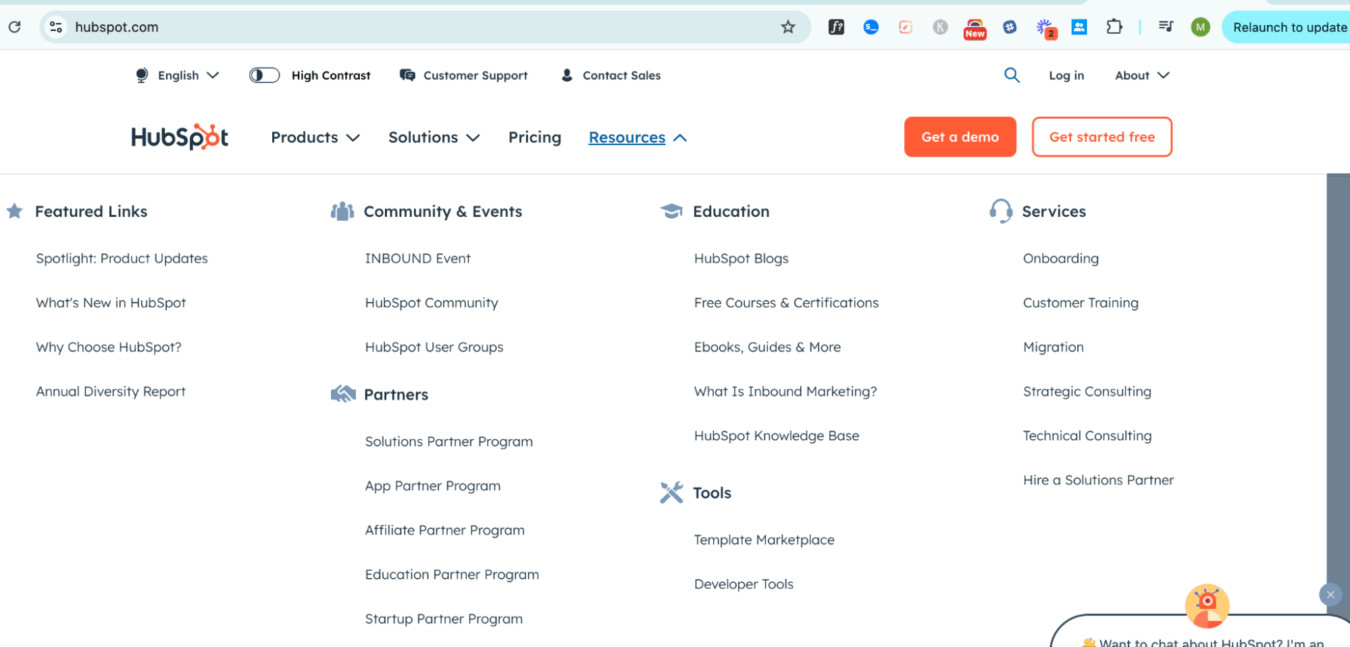
They also have a thriving YouTube channel and actively engaged social media platforms.
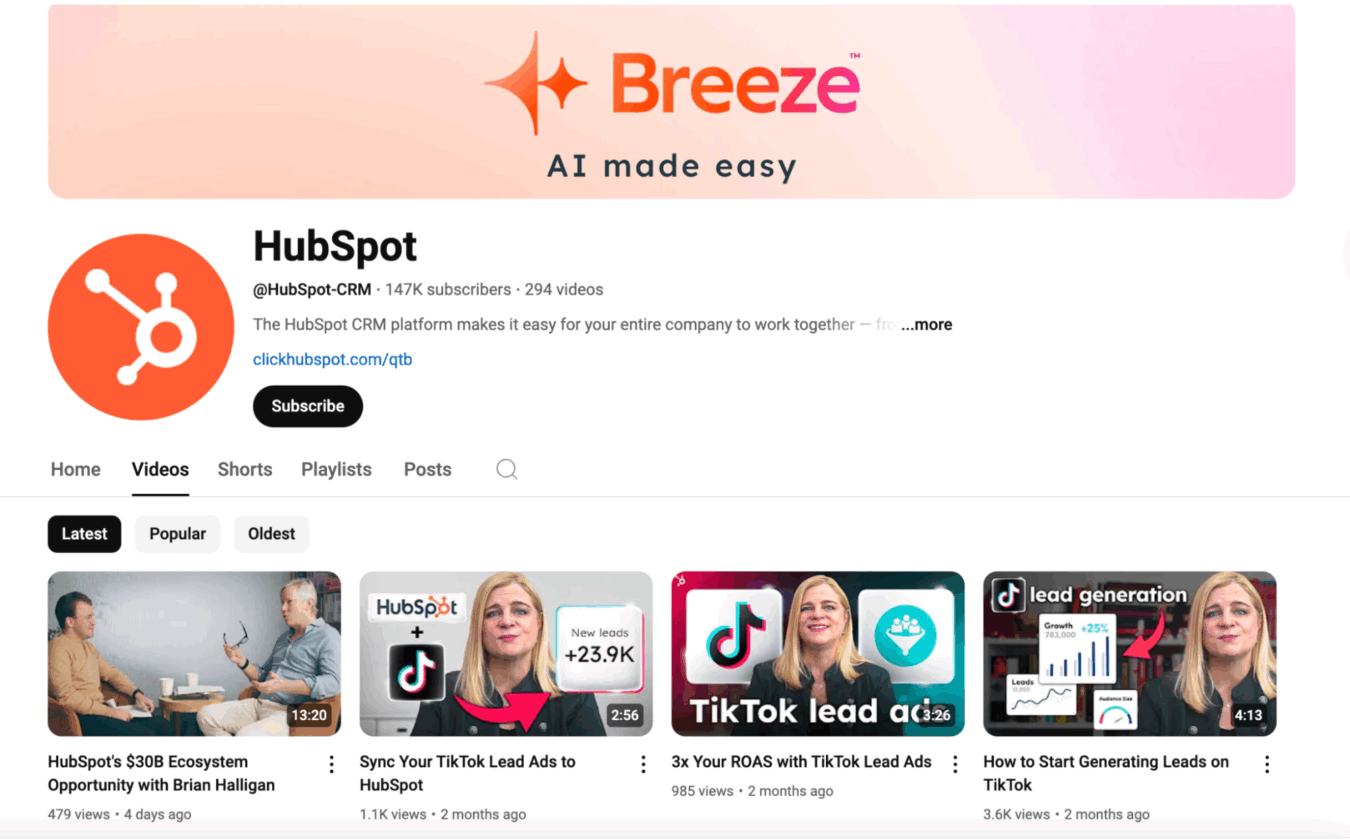
Therefore, part of building a strong entity is expanding beyond blogging to build out content assets that fit each stage of the buyer journey.
We have a separate resource dedicated to our approach for developing B2B SaaS content for every step of the buyer journey, though the main takeaway is to implement an omnichannel strategy that meets customers where they are and delivers the content in a format that makes the most sense.
3. External (Recognition)
The true test of a brand’s credibility and legitimacy is its status within the broader industry.
If many other industry experts are discussing your brand online, search engines view that as a positive signal that you’re a credible source of information.
For example, you’ll notice that in this blog post, we organically linked to the data study conducted by Rand Fishkin, as it helps outline the future of SEO.
It’s no surprise that Rand Fishkin is considered a thought leader in the marketing industry because he regularly produces helpful data. As the data is helpful, it’s regularly linked to and discussed online by other marketers.
Search engines view these links and mentions as strong credibility signals.
Therefore, earning recognition from other third parties is critical to building a strong entity.
Some ways that we do that include:
- Creating original data (like the study discussed above)
- Building brand partnerships (e.g., integration partners, joint webinars, etc.)
- Traditional PR
Community engagement is also critical. For example, speaking at events, participating in online forums, and even creating your own community platform are all excellent strategies to build your brand’s entity.
Measuring SEO Success
The traditional method of measuring SEO success was tracking traffic volume to a website.
We never liked using traffic volume as an SEO success metric, as more traffic doesn’t always correlate with more conversions.
Today, traffic volume is even less relevant as it doesn’t account for brand visibility in the AI overviews, which is often a powerful touchpoint in the buyer journey.
Instead, we have three primary methods of measuring SEO success that are all measured in the Entity Authority Metrics dashboard:

1. Technical Authority Metrics
To ensure the website is technically sound and operating as intended, we track the following metrics:
- API documentation engagement
- Developer portal usage
- Integration adoption rates
- Technical content performance
2. Commercial Impact Metrics
The goal of any marketing strategy is revenue acceleration, and the best metrics to measure the commercial impact of SEO include:
- Organic traffic by intent
- Conversion rates by content type
- Pipeline influence
- Revenue attribution
3. Stakeholder Engagement
Unlike SMB software, enterprise B2B software requires buy-in from multiple stakeholders. The key to revenue acceleration is ensuring each buying committee member receives the information they need with the least friction possible.
Therefore, here are a few of the metrics we use to measure stakeholder engagement:
- Content engagement by role
- Multi-touchpoint analysis
- Decision maker engagement
- Implementation team adoption
The Future of Search Engines and Next Steps
There’s plenty of speculation about the future of Google and search as more people are using LLMs to search for information.
However, the data referenced earlier shows that LLMs currently only have a 0.5% market share while Google still has a 93.57% market share.
Google will continue to be a strong force in the coming years.
Additionally, Google’s primary business model (selling ads) relies on people using its search engine, so it will continue to adapt to retain searchers.
So is investing in SEO still worth it?
Yes. In-market prospects will continue to use search engines to research and discover solutions.
The key is to adapt your strategy to focus on building an entity rather than approaching SEO from the perspective of purely targeting specific keywords.
This ensures you’ll not only show up in the traditional search results, but also dominate the AI Overviews and even LLM queries.
If you want more guidance building your B2B SaaS SEO strategy, reach out to our team of experts.
We can analyze your strategy, identify opportunities, and lay out a roadmap to improve your SEO success.
What you should do now
Whenever you’re ready…here are 4 ways we can help you grow your B2B software or technology business:
- Claim your Free Marketing Plan. If you’d like to work with us to turn your website into your best demo and trial acquisition platform, claim your FREE Marketing Plan. One of our growth experts will understand your current demand generation situation, and then suggest practical digital marketing strategies to hit your pipeline targets with certainty and predictability.
- If you’d like to learn the exact demand strategies we use for free, go to our blog or visit our resources section, where you can download guides, calculators, and templates we use for our most successful clients.
- If you’d like to work with other experts on our team or learn why we have off the charts team member satisfaction score, then see our Careers page.
- If you know another marketer who’d enjoy reading this page, share it with them via email, Linkedin, Twitter, or Facebook.
